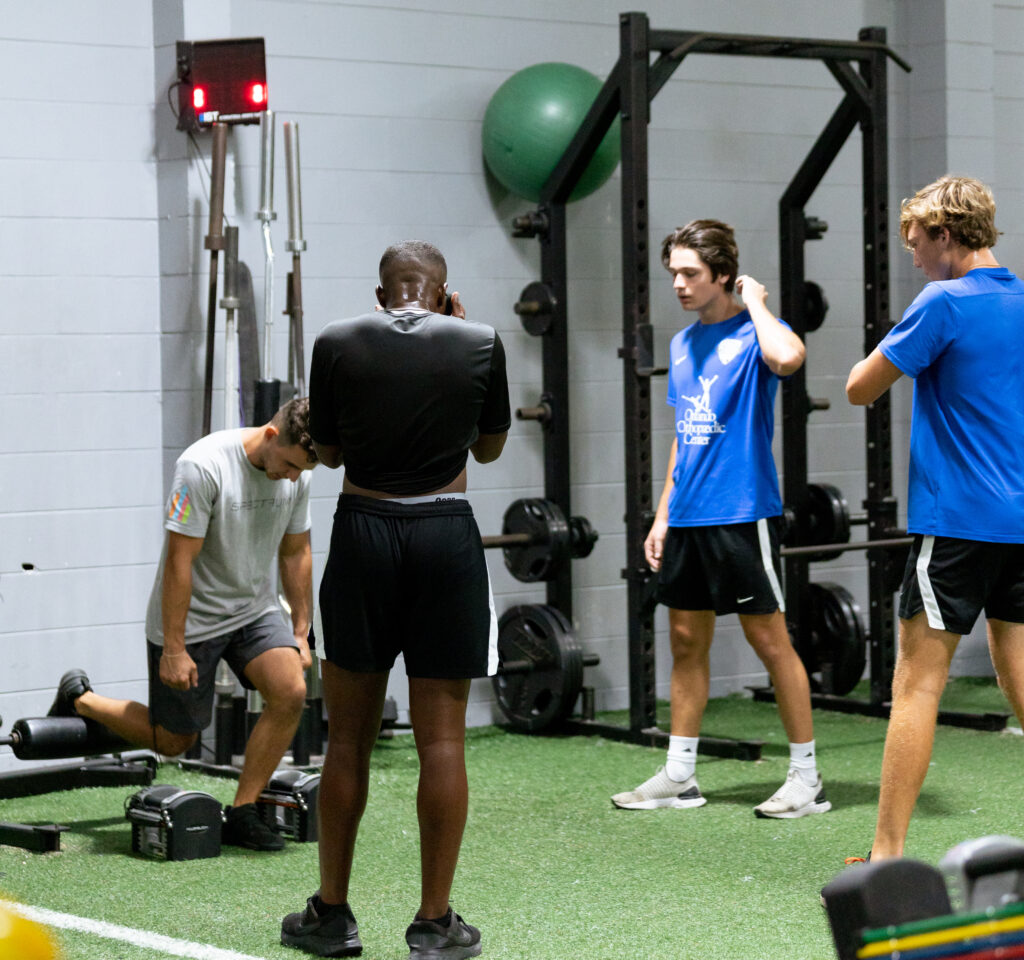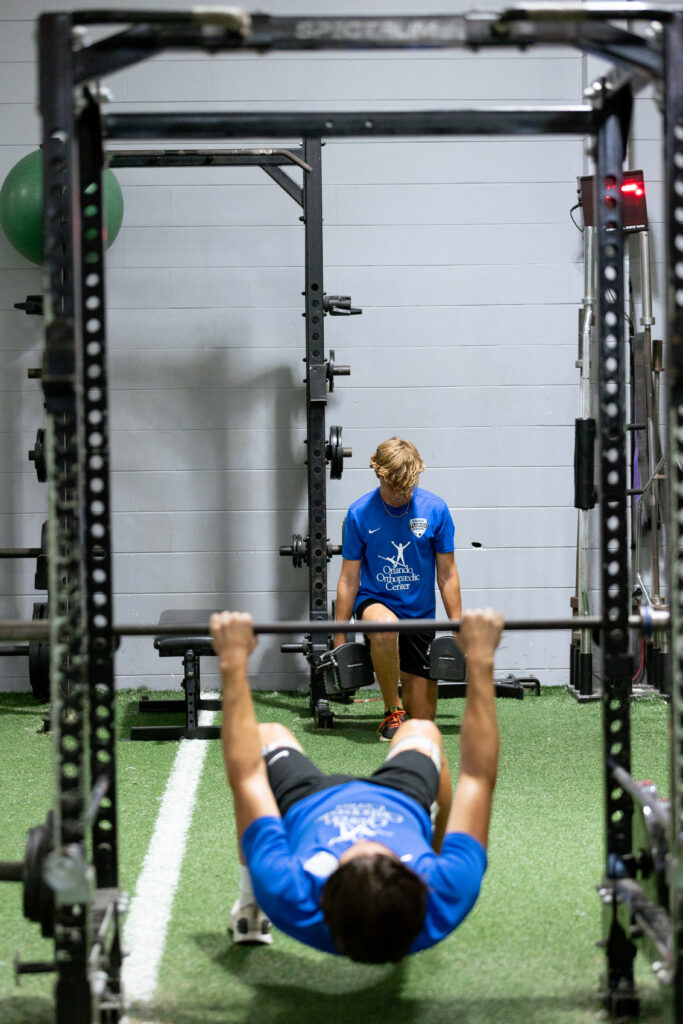
In-Season Training for Soccer
_____________________________________
In-season strength and conditioning work is often overlooked by athletes, coaches, and teams, but it is crucial for maintaining optimal performance throughout the competitive season. Many athletes assume that they can focus solely on their sport-specific skills during the season and that strength and conditioning work can be neglected. However, this can lead to a decline in performance, an increased risk of injury, and a longer recovery time. That being said since we are in season, we have to incorporate strength training into the athlete’s already busy schedule. With Florida Kraze Krush (FKK) we train 1x/week when in season and 3x/week during the summer off season. We’re going to take a deep dive into what that 1x/week session actually looks like and how we get the most out of it!
We have multiple goals we’re trying to achieve with our sessions and so we split them into blocks that focus on those specific goals. The first training block is dedicated to speed and power, it doesn’t matter how strong you are if you’re slow. From there we go into two different whole body strength blocks. For the older athletes they have big lifts like bench or split squat, the younger ones are just focusing on building perfect movement patterns.
Speed and Power Development
Speed and power are the most important traits for our athletes. However, they’re also the first thing we lose when we stop training them. Most research will show the residual training effect for speed is around 5 days. This means if we go longer than 5 days without receiving a speed stimulus to the body we will start to lose some of our speed. Some will argue that they’re sprinting in their sport so they’re good, but that’s not true. Most athletes take around 20yds to get to max velocity and the truth is in team sports we never fully sprint 20yds in a straight line. So we make sure every session has some kind of longer max effort sprint with full recovery, and we often pull out our timing gates to track them. This not only lets us and them see the improvements but also makes the sessions more competitive as they try to outdo each other and get the best time.
Maintain Muscular Strength and Endurance
During the season, athletes spend most of their time practicing and playing their sport, and their strength training can fall by the wayside. However, it is crucial to maintain strength and endurance throughout the season to prevent muscle loss and to ensure that the athlete can perform at their best during games. We have two lift blocks where we make sure to hit every major muscle group, keep volume low on the lower body and focus on stabilizer muscles around the hips, knees, and ankles as these joints are the most likely for injury among soccer players
Injury Prevention
In-season strength and conditioning work can help to prevent injuries. By maintaining strength, power, and flexibility, athletes can reduce their risk of injury and recover more quickly from any injuries that do occur. Additionally, strength and conditioning helps to address any imbalances or weaknesses that could lead to injury down the road. When we talk about soccer players in general, we see an imbalance between their quads and hamstrings. Quads are far more developed due to the nature of the game – all the short sprints and quick cuts. This imbalance is one of the number one indicators of knee injury. So, we make sure we put an emphasis on doing more hamstring work than quad in our lifting to balance this out. As mentioned above we want to build up the smaller muscles around the joints most likely to get hurt in soccer – hips, knees, ankles. These stabilizer muscles take a lot of the impact off the joints but only if they’re trained properly.
Recovery
Finally, in-season training can aid with the recovery process. By including recovery-focused exercises such as foam rolling, stretching, and mobility work, athletes can reduce soreness and speed up recovery between games. This allows them to perform at their best and reduce the risk of injury. In the event that we have a team coming off a 2 or 3 game weekend we change our focus from training to recovery. When they come in we usually go through some movement just to get the blood flowing, then they all grab a foam roller, a vibrating ball or gun, or one of our many recovery tools and we do soft tissue work. These help break up scar tissue within the muscles. From there we go through stretching or isometric exercises which stimulate blood flow to the damaged muscles. That blood flow brings in nutrients that will expedite the recovery process. Often, we’ll finish with our Marc Pro E-stim machines or laying with their legs up a wall; both serve as a lower body flush to bring home everything else we already did. These recovery sessions not only make the athletes feel better, but they allow them to perform better throughout the training week. By feeling fresher sooner, they get more out of their soccer training and be better prepared for their next games.

Leave a Reply